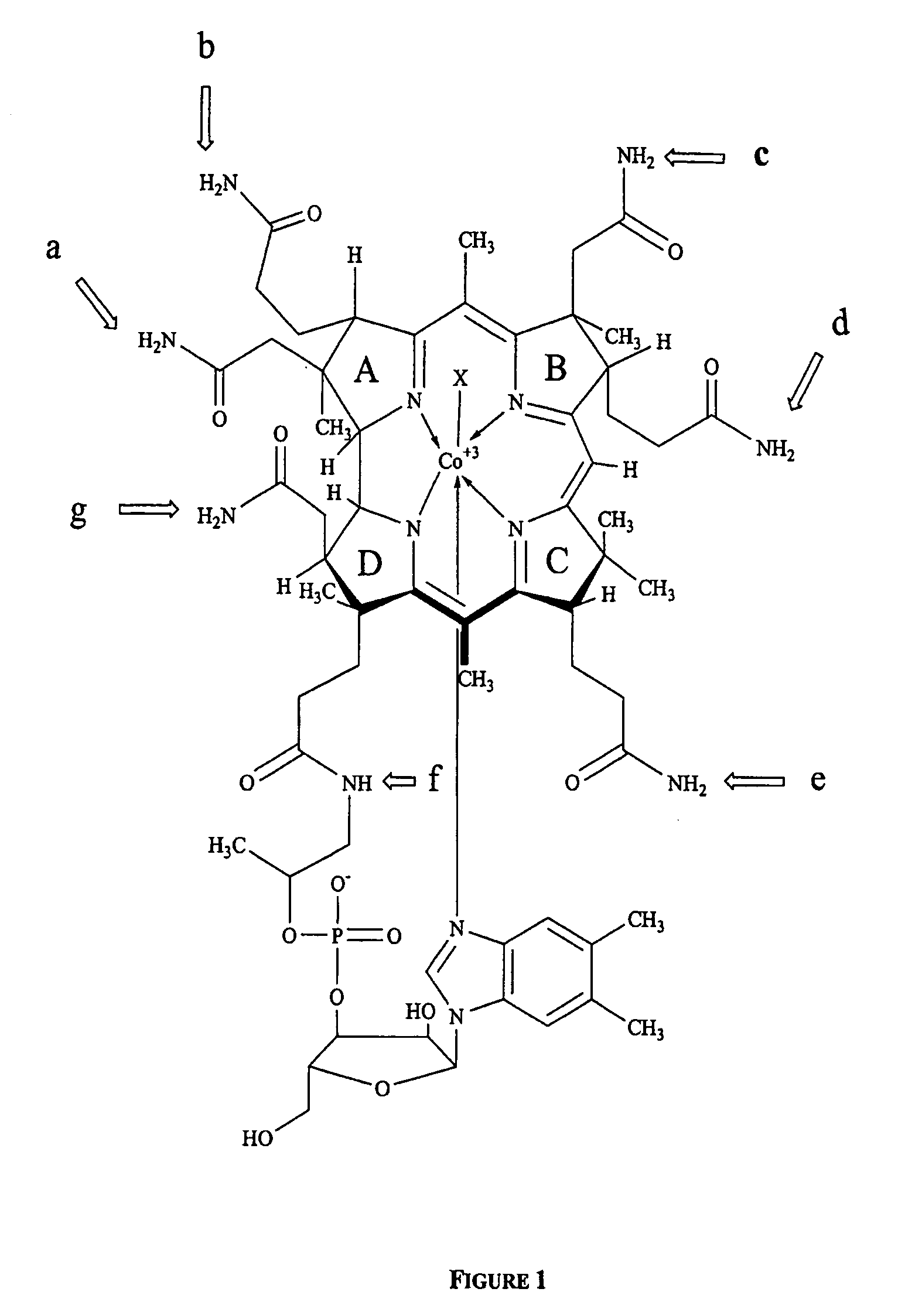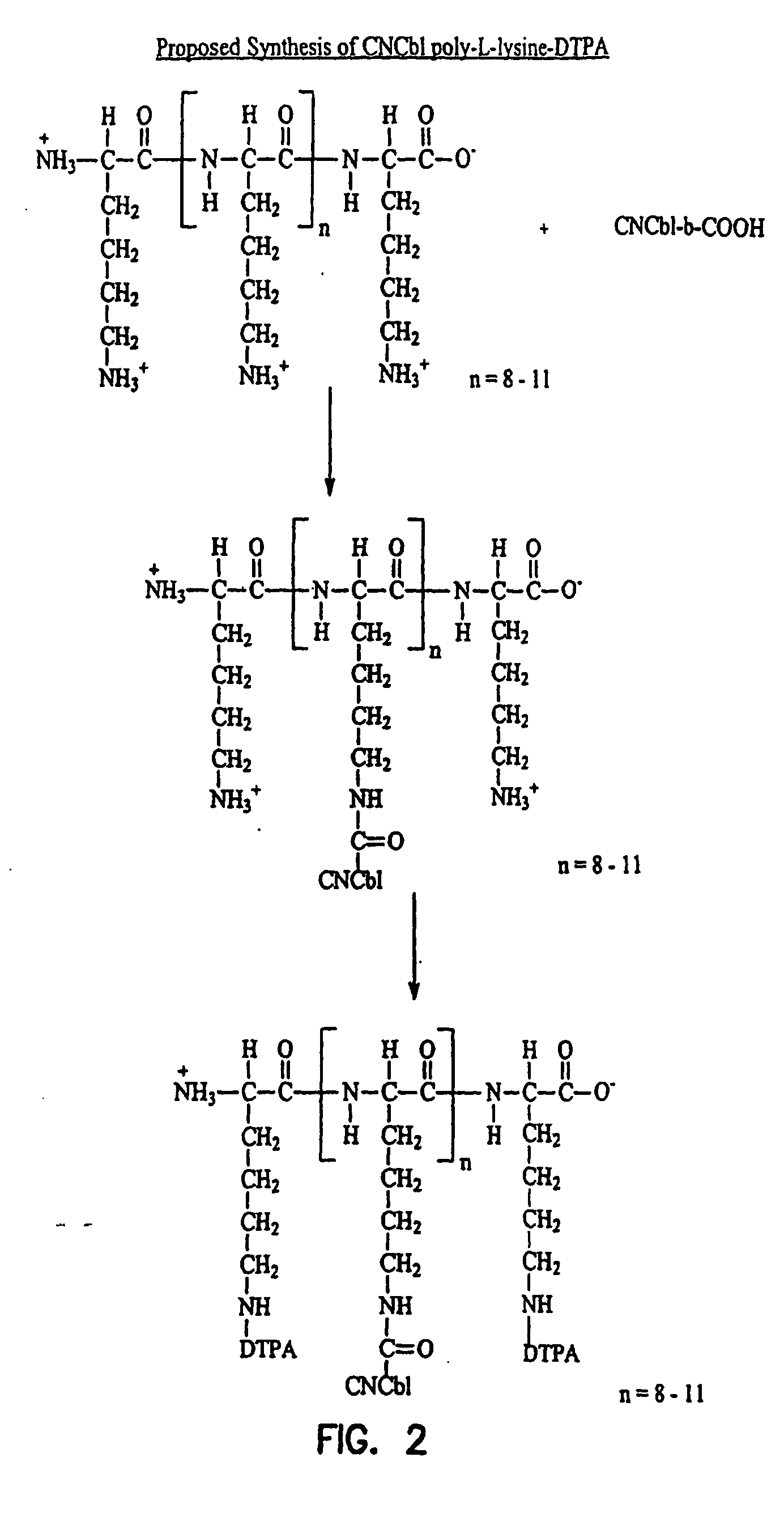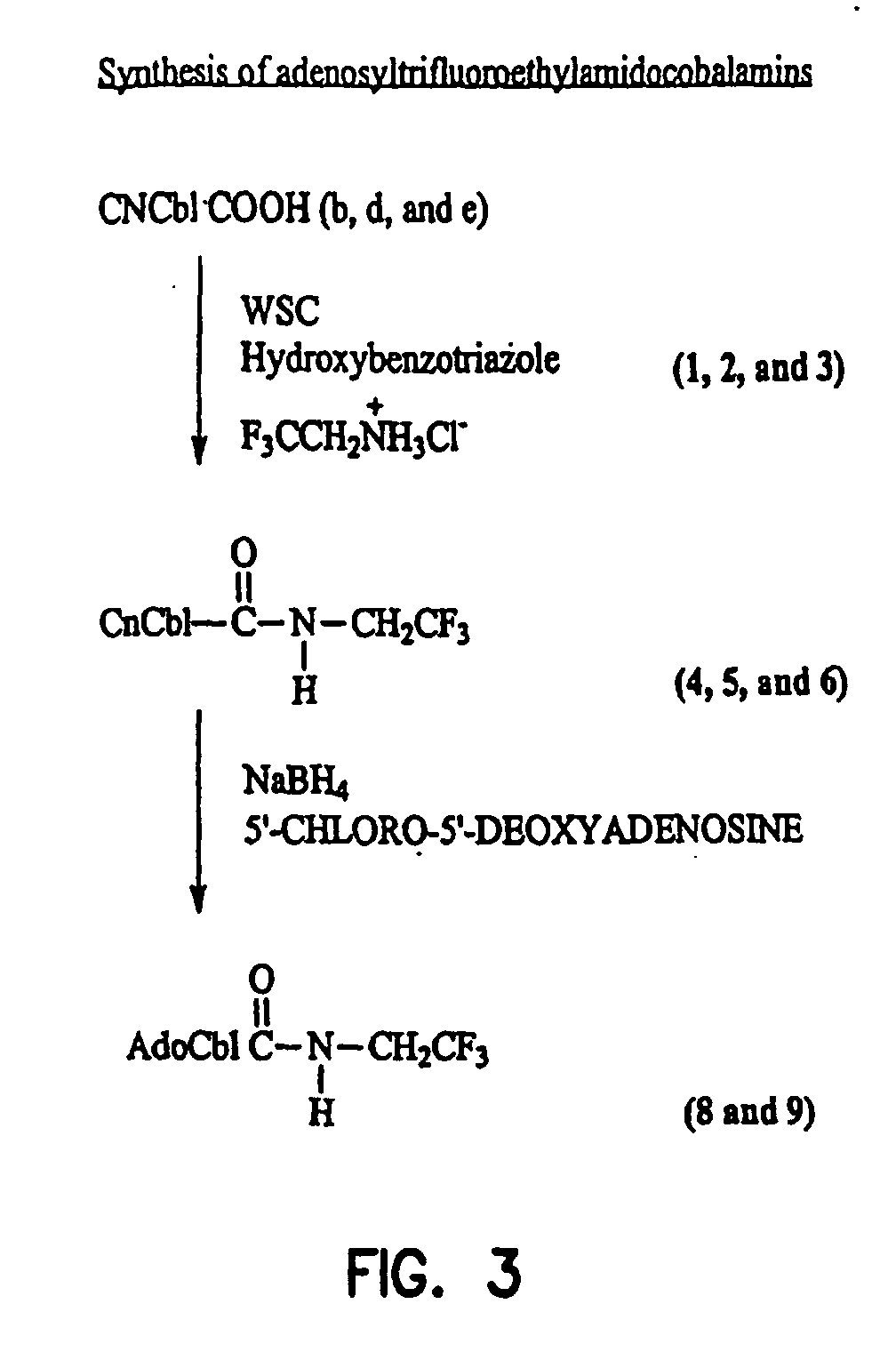Transcobalamin receptor binding conjugates useful for treating abnormal cellular proliferation
- Summary
- Abstract
- Description
- Claims
- Application Information
AI Technical Summary
Benefits of technology
Problems solved by technology
Method used
Image
Examples
example 1
Cyanotrifluoroethylamidocobalamin (4, 5 and 6, FIG. 3).
[0334] Separate reaction mixtures containing 600 mg (˜0.4 mmol) of the b, d and e-cyanocobalamin monocarboxylic acids (compounds 1, 2, 3, FIG. 3), hydroxybenzo-triazole 540 mg (4 mmol), 1-ethyl-3(3′-dimethylaminopropyl) carbodiimide 768 mg (4 mmol) and 2,2,2-trifluoroethylamino hydrochloride 678 mg (5 mmol) were dissolved in 50 mL water and the pH adjusted to 6.8 with 1N NaOH. The progress of the reactions was monitored by TLC using 2-propanol-NH4OH-water (7:1:2) as the solvent. After 2 hours incubation at room temperature, the mixtures were extracted into 92% aqueous phenol. The phenol layers were extensively washed with water to remove the water-soluble reagents. One volume of acetone and three volumes of ether were then added to the phenol phases and the desired fluorocobalamins were back extracted into water. The aqueous phases were extracted three times with ether to remove residual phenol. The solutions were concentrated...
example 2
Adenosyltrifluoroethylamidocobalamins (8 and 9, FIG. 3).
[0335] Separately the b- and e-cyanotrifluoroethylamidocobalamins (compounds 5, 6) 500 mg (˜0.33 mmol) were reduced with sodium borohydride to their cobalt (1) forms, which in turn were reacted with 5′chloro-5′-deoxyadenosine as described before (Hogenkamp, H. P. C., Chemical synthesis and properties of analogs of adenosylcobalamin, Biochemistry, 13, 2736-2740 (1974)). The reaction mixtures were acidified to a pH of 3 with 1N HCl and applied to separate columns of A6 50×2 (200-400 mesh, pH 3.0). The columns were washed with water and the desired adenosylcobalamins eluted with 0.1 M sodium acetate pH 6A. After desalting by extraction into phenol as described above, both 8 and 9 were isolated as red powders. Yields 315 mg and 320 mg respectively.
example 3
Cyano-bis-trifluoroethylamidocobalamin (7, FIG. 4).
[0336] A reaction mixture containing cyanocobalamin-b, d-dicarboxylic acid (540 mg, ˜0.36 mmol) was reacted with 2,2,2-trifluoroethylamine hydrochloride 678 mg (5 mmol) as described above, compound 7 was crystallized from aqueous acetone. Yield 630 mg.
PUM
| Property | Measurement | Unit |
|---|---|---|
| Magnetic field | aaaaa | aaaaa |
| Volume | aaaaa | aaaaa |
| Molecular weight | aaaaa | aaaaa |
Abstract
Description
Claims
Application Information
 Login to View More
Login to View More - R&D
- Intellectual Property
- Life Sciences
- Materials
- Tech Scout
- Unparalleled Data Quality
- Higher Quality Content
- 60% Fewer Hallucinations
Browse by: Latest US Patents, China's latest patents, Technical Efficacy Thesaurus, Application Domain, Technology Topic, Popular Technical Reports.
© 2025 PatSnap. All rights reserved.Legal|Privacy policy|Modern Slavery Act Transparency Statement|Sitemap|About US| Contact US: help@patsnap.com



